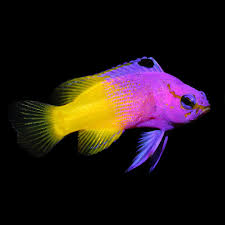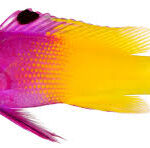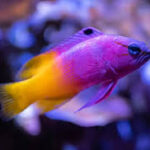The Dragon in Traditional Chinese Decorative Artifacts

The dragon, an enduring symbol in Chinese culture, has played a vital role in shaping the aesthetic and spiritual landscape of the country for centuries. Recognized as a symbol of power, wisdom, and protection, the dragon has been consistently featured in various forms of Chinese decorative arts, where it not only enhances the visual appeal of objects but also imbues them with symbolic significance. From intricate jade carvings to embroidered silks, and from ceramics to metalworks, the dragon’s presence in traditional Chinese decorative artifacts is both an artistic and cultural expression that continues to resonate deeply with the people of China and beyond. This article explores the role and significance of the dragon in traditional Chinese decorative objects, discussing its symbolic meanings, artistic representations, and the way it is incorporated into various crafts.
The Symbolic Significance of the Dragon in Chinese Culture
In Chinese culture, the dragon is much more than just a mythical creature; it represents the harmonious union of yin and yang, the cosmic balance of opposites that is central to Chinese philosophy. As a symbol, the dragon embodies strength, prosperity, longevity, and imperial authority. Unlike the malevolent dragons of Western mythology, the Chinese dragon is a benevolent and auspicious creature, often associated with the natural forces of water, such as rain, rivers, and seas. It is believed to have the ability to control the elements, bringing rain to nourish crops and ensuring the fertility of the land.
Throughout history, the dragon has been a symbol of the emperor’s divine right to rule, with emperors often referred to as the “Son of Heaven” and believed to be the earthly manifestation of the dragon. Consequently, the dragon is frequently depicted in imperial artifacts and royal regalia as a means to signify the emperor’s connection to the divine and to invoke protection and prosperity for the empire.
The dragon’s significance extends to families and individuals as well. It is often seen as a guardian spirit, protecting the household from evil influences and ensuring the well-being of its members. The dragon’s auspicious qualities make it an ideal symbol for many forms of decorative art, especially those designed to bless and protect.
The Dragon in Traditional Chinese Decorative Artifacts
Traditional Chinese decorative objects, ranging from ceramics, jade carvings, embroidery, woodwork, metalwork, to paintings, have long incorporated the dragon as a central motif. These pieces were not just designed to please the eye; they were imbued with symbolic meaning and were intended to reflect the beliefs, values, and aspirations of the Chinese people. The dragon was frequently used to elevate the status of a decorative object, invoking its auspicious qualities to protect and bless the owner.
1. Ceramics and Porcelain:
Chinese ceramics and porcelain are renowned for their exquisite craftsmanship and intricate designs. The dragon is one of the most popular motifs found on traditional Chinese ceramics, particularly on pieces made during the Ming and Qing Dynasties. These pieces include vases, plates, bowls, and incense burners, all featuring the dragon prominently.
One of the most iconic dragon motifs found on ceramics is the five-clawed dragon, which was reserved exclusively for the emperor. This symbol of imperial authority often appears on blue and white porcelain, a style that became famous during the Ming Dynasty. The porcelain typically depicts the dragon in dynamic poses, coiling and twisting amid clouds or waves, evoking its power over natural forces. The presence of the dragon on ceramic pieces not only served an ornamental purpose but also represented the wealth and status of the owner, and was thought to bring good fortune.
In addition to imperial ceramics, the dragon also appeared on more common objects intended for everyday use. These could include teapots, cups, and storage jars, with designs that incorporated the dragon as a symbol of protection and blessings for the home.
2. Jade Carvings:
Jade has held immense cultural significance in China for thousands of years, prized for its rarity, beauty, and durability. The use of jade in decorative objects dates back to the Neolithic period, and jade dragon carvings have been among the most sought-after pieces in traditional Chinese art. The dragon’s presence in jade carvings often symbolizes imperial power, longevity, and protection.
Dragon-shaped jade ornaments, pendants, and figurines have long been used in Chinese burial rites and ceremonial offerings. In the afterlife, it was believed that jade could protect the spirit, and the dragon carved from jade would serve as a guardian to ward off evil spirits. These jade carvings were often used as personal amulets or ritual objects, as they were believed to bring protection, health, and longevity to the wearer.
The process of carving jade into dragon shapes is a meticulous and skilled art form. The dragon is often depicted in a coiled, fluid motion, embodying the grace and power of the creature. Jade dragon carvings remain a beloved aspect of Chinese decorative art, admired for both their craftsmanship and their deep cultural significance.
3. Embroidered Silks:
Another area where the dragon plays a significant role in Chinese decorative art is in embroidery, particularly on silk fabrics. The dragon is a frequent motif in traditional Chinese garments, including robes, coats, and ceremonial attire. The dragon embroidery on silk garments often conveys both the status of the wearer and their aspirations for protection and prosperity.
The dragon robe (often referred to as the “longpao”) worn by the emperor is one of the most iconic examples of dragon embroidery. These robes were richly embroidered with dragons, typically using gold thread and silk threads in vibrant colors. The robe not only displayed the emperor’s power but also served as a symbol of the universe, with the dragon representing the forces of nature and the heavens.
Dragons were also embroidered on wedding garments, fans, and decorative pieces, symbolizing the couple’s wish for a harmonious and prosperous marriage. The dragon, when paired with the phoenix, represented the yin and yang balance of masculine and feminine energies, making it an ideal symbol for weddings and marital harmony.
4. Wood Carvings:
Woodwork has been another important medium for depicting the dragon in Chinese art. Dragons carved into wooden panels, furniture, and sculptures have historically been used to decorate temples, palaces, and homes. The intricate carvings depict the dragon in swirling, dynamic movements, often surrounded by other auspicious symbols like clouds, waves, or flames.
The use of dragons in wooden artifacts serves both decorative and symbolic purposes. In temples and palaces, wooden dragon carvings would serve to invoke the protection of the gods or to ensure the prosperity of the region. At home, wood carvings of dragons would protect the family and ward off evil spirits. These carvings could be found on everything from doors and window panels to furniture and architectural details.
5. Metalwork:
Bronze, gold, and silver have also been used extensively in the production of dragon-themed decorative objects. Metal dragon artifacts include candleholders, incense burners, belt buckles, and pendants. The use of metal adds an element of imperial grandeur to the dragon, enhancing its symbolism as a protector and a harbinger of wealth and fortune.
For example, the dragon incense burner is a popular item in both ceremonial and domestic settings. These burners, often made of bronze, would have a dragon coiled around the base or handle, symbolizing the presence of divine protection during the offering of incense to ancestors or gods.
The Role of the Dragon in Modern Decorative Art
While the prominence of dragons in Chinese art has evolved with time, the symbolism remains strong, and many of these traditional motifs continue to inspire contemporary artists and designers. Today, the dragon is still a central figure in various forms of Chinese decorative arts, including wall hangings, furniture design, jewelry, and home decor. The blend of ancient traditions with modern aesthetics ensures that the dragon’s significance endures, and its status as a symbol of power, protection, and prosperity continues to captivate people both within and outside of China.
Conclusion
The dragon holds a central place in the world of traditional Chinese decorative artifacts. Its depiction across a variety of media—from ceramics and jade carvings to embroidery, woodwork, and metalwork—shows not only the dragon’s artistic versatility but also its enduring symbolic significance. In these artifacts, the dragon is more than just a decorative element; it serves as a representation of divine authority, spiritual protection, and the harmonious forces of nature. For centuries, the dragon has been a powerful cultural symbol that has enriched Chinese decorative arts and continues to be a source of inspiration and reverence in the present day. Whether seen in the delicate curves of jade carvings, the vivid colors of silk embroidery, or the majestic forms of metal sculptures, the dragon remains a testament to the richness of Chinese artistic heritage and the profound connection between art, culture, and spirituality.

